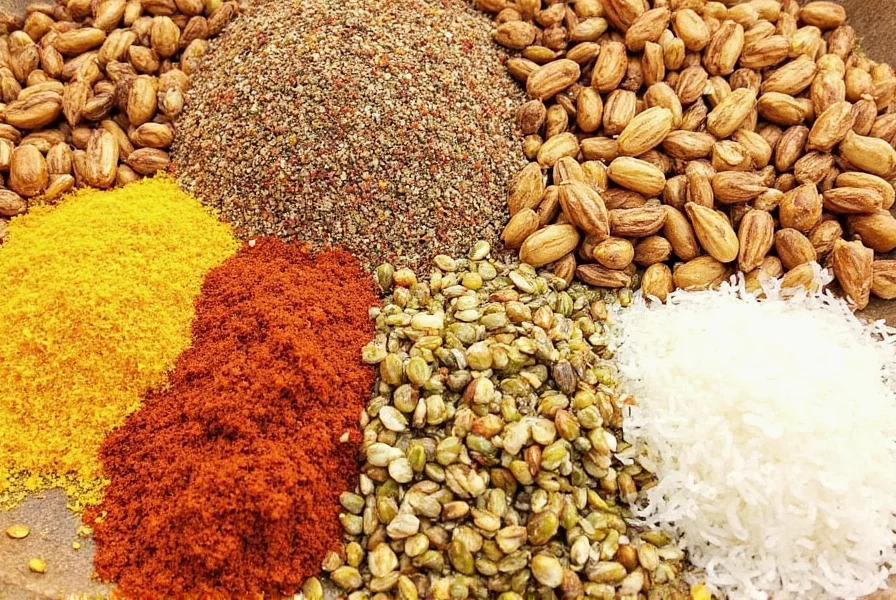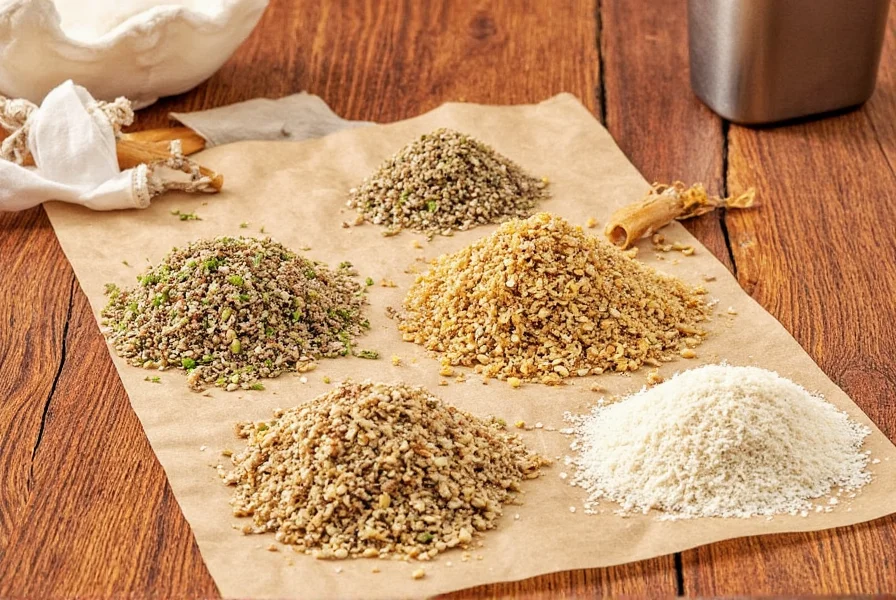Table of Contents
- 7 Creative Ways to Use Dukkah
- What Is Dukkah?
- A Brief History
- Flavor Profile
- How to Make Dukkah
- Buying Guide
- FAQ
- Conclusion
Introduction
Dukkah is an ancient Egyptian spice blend that transforms ordinary dishes with its nutty, toasty crunch. Whether you're a home cook or professional chef, this versatile seasoning adds instant sophistication to any meal. Below are 7 creative ways to use dukkah that will revolutionize your cooking routine.
7 Creative Ways to Use Dukkah
- Avocado Toast Upgrade
Sprinkle dukkah over ripe avocado on sourdough toast. The nutty crunch pairs perfectly with creamy avocado and a drizzle of olive oil. For extra flavor, add a squeeze of lemon and microgreens.

- Protein Crust for Meat and Fish
Press dukkah onto chicken breasts, salmon fillets, or lamb chops before searing. The nuts create a crispy, flavorful crust while the spices infuse deep savory notes. Works best with medium-high heat for 2-3 minutes per side.
- Roasted Vegetable Enhancer
Toss carrots, cauliflower, or sweet potatoes with olive oil and dukkah before roasting. The spice blend caramelizes beautifully in the oven, adding complex texture and flavor to simple vegetables.
- Salad Finishing Touch
Sprinkle dukkah over grain salads, green salads, or roasted beet salads. It adds a satisfying crunch that elevates ordinary greens. Try it on a Mediterranean salad with feta, olives, and cucumber.
- Dip Booster for Hummus and Yogurt
Stir 1-2 tablespoons of dukkah into hummus or Greek yogurt for instant flavor complexity. Serve with pita chips or fresh vegetables for a quick appetizer that impresses guests.
- Breakfast Innovation
Sprinkle dukkah over scrambled eggs, oatmeal, or yogurt bowls. The nutty spices complement sweet and savory breakfasts equally well. Try it on vanilla yogurt with fresh berries for a surprising twist.
- Dessert Accent
Use dukkah as a finishing touch on chocolate mousse, vanilla ice cream, or fruit tarts. The savory-spicy notes create a delightful contrast with sweet desserts. Start with a light sprinkle to avoid overpowering.
What Is Dukkah?
Dukkah (pronounced "doo-kah") is a traditional Egyptian spice blend made from toasted nuts, seeds, and spices. Unlike typical spice mixes, it maintains a coarse texture for maximum crunch. Core ingredients include hazelnuts, sesame seeds, cumin, and coriander, though modern variations often include pistachios, fennel, or mint.
| Traditional Dukkah | Modern Twist Variations |
|---|---|
| Hazelnuts | Pistachios or Almonds |
| Cumin | Smoked Paprika |
| Coriander Seeds | Fennel Seeds |
| Sesame Seeds | Poppy Seeds |
| Dried Thyme | Fresh Herbs (like parsley) |
A Brief History
Dukkah dates back over 2,000 years to ancient Egypt, where laborers created it as a portable energy source. The name comes from the Arabic word for "to crush," reflecting its traditional preparation method using a mortar and pestle. Originally served with bread dipped in olive oil, it has evolved into a global culinary staple thanks to its versatility and complex flavor profile.
Flavor Profile
Dukkah's magic lies in its balanced texture and taste:
- Nutty Base: Hazelnuts or almonds provide buttery richness
- Toasty Spices: Cumin and coriander deliver warm, earthy depth
- Crunch Factor: Sesame and other seeds create textural contrast
- Herbal Notes: Dried thyme or mint adds freshness and brightness
How to Make Dukkah at Home
Follow these simple steps for fresh, aromatic dukkah:
- Toasting: Dry roast cumin and coriander seeds in a skillet until fragrant (2-3 minutes). This unlocks their essential oils.
- Grinding: Pulse seeds in a spice grinder until coarsely ground. Avoid over-processing to maintain texture.
- Mixing: Combine with chopped roasted hazelnuts, sesame seeds, and dried herbs. Stir gently to preserve nut chunks.
- Storage: Keep in an airtight container away from sunlight. Use within 3 months for peak freshness.

Buying Guide
Pre-Made Dukkah Options
- Sumac & Spice Egyptian Dukkah
Traditional recipe with balanced hazelnut-cumin-sesame profile. Best for beginners and everyday use. - Zafran Market Premium Dukkah
Includes pistachios and fennel for floral sweetness. Ideal for gourmet dishes and desserts.
| Ingredient | Quality Tips | Recommended Brands |
|---|---|---|
| Hazelnuts/Almonds | Roasted, unsalted, whole (not sliced) | Berkeley Farms, Kirkland Signature |
| Cumin Seeds | Whole seeds, dark brown color | Spice Hunter, Simply Organic |
| Coriander Seeds | Firm and aromatic, no bitterness | Frontier Co-op, Morton & Bassett |
| Sesame Seeds | Golden hue, dry and non-oily | Arrowhead Mills, Bob's Red Mill |
| Dried Thyme/Mint | Deep green, strong fragrance | McCormick, Simply Organic |
Frequently Asked Questions
- What is dukkah and how is it pronounced?
- Dukkah (pronounced "doo-kah" or "dooka") is an Egyptian spice blend made from nuts, seeds, and spices. It's not a single spice but a textured mixture that adds crunch and complex flavors to dishes.
- Is dukkah spicy or hot?
- Traditional dukkah is not spicy. It has warm, earthy flavors from cumin and coriander but no chili peppers. Some modern versions may include heat, but classic dukkah focuses on nutty, toasty notes.
- How long does homemade dukkah last?
- Stored in an airtight container away from sunlight, homemade dukkah stays fresh for 2-3 months. The nuts may go rancid over time, indicated by a bitter smell or taste.
- Can I make dukkah without nuts for allergies?
- Yes! Substitute nuts with extra seeds like pumpkin, sunflower, or sesame seeds. The texture will be seedier but still delicious and allergen-friendly.
- What are the main health benefits of dukkah?
- Dukkah provides healthy fats from nuts, calcium/magnesium from sesame seeds, and digestive benefits from cumin. Use it as a seasoning rather than a main ingredient for optimal nutrition.
- Can I use dukkah as a rub for meats?
- Absolutely! Press dukkah onto chicken, lamb, or fish before searing. The nuts create a beautiful crust while spices infuse flavor. Works best with medium-high heat for 2-3 minutes per side.
- Is dukkah gluten-free?
- Yes, traditional dukkah is naturally gluten-free. However, check labels for pre-made blends to ensure no cross-contamination if you have celiac disease.
Conclusion
Dukkah's ancient origins meet modern culinary innovation in this versatile spice blend. Its ability to transform simple ingredients into extraordinary dishes makes it a must-have in any kitchen. Start with these 7 creative uses and experiment with your own variations. Remember: a little dukkah goes a long way in adding flavor, texture, and sophistication to every meal.











 浙公网安备
33010002000092号
浙公网安备
33010002000092号 浙B2-20120091-4
浙B2-20120091-4